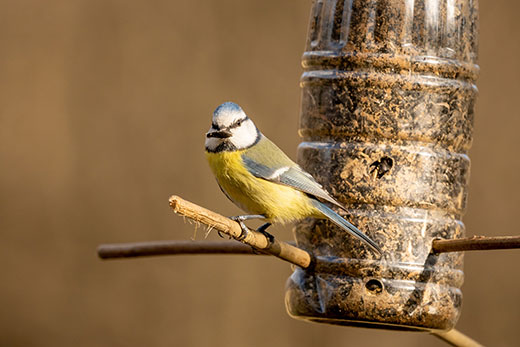
Feeding backyard birds is a popular homeowner's hobby, but it may have unintended consequences, says K-State wildlife expert Drew Ricketts.
Danger near the bird feeder? K-State wildlife expert urges caution
Feeding birds may have unintended consequences, says Ricketts
June 19, 2023
By Bailee Farmer, K-State Research and Extension news service
MANHATTAN, Kan. -- Bird feeders are a great way to enjoy nature without leaving your front porch, and many homeowners understand the joys of seeing multiple bird species frequent the feeders.
But Kansas State University wildlife specialist Drew Ricketts said bird feeders also can attract predators and other wildlife into your yard.
For example, racoons are seven times more likely to enter the yard and deer are two times more likely if you have a bird feeder.
“Carnivores, such as coyotes and red foxes and those sorts of critters, are at least one and a half times more likely to be in yards with bird feeders,” Ricketts said.
“Folks often are inadvertently attracting critters to the yard. That can cause problems that don't have anything to do with the bird feeder, but one of the things that I would suggest to those folks is to think about how they might be contributing to that situation by having food available in the yard,” Ricketts said.
Listen to an interview by Shelby Varner with Drew Ricketts on the weekday radio podcast, Agriculture Today
At least once a year, Ricketts said he gets a call from a person who wants to know how to get rid of a hawk that is hanging around their yard, preying on birds. He said there is nothing you can do because an increase in a prey species can lead to an increase in a predator species.
According to Ricketts, bird feeders allow such predators as domesticated cats and hawks to take advantage of the condensed hunting grounds around the feeder.
“Feeding birds is something people do for themselves and might have unintended consequences,” Ricketts said.
According to Ricketts, birds don't need to be fed in the winter. A study that looked at birds' reproductive performance showed that birds being fed in the winter time hatched chicks that weighed less and had a lower survival rate than birds that did not have access to feeders.
Ricketts said concentrating birds in one area around a feeder can also be a hot spot for parasites and diseases. Studies report an increase in diseases like avian pox and infections of lice and mites.
For those who want to keep birds coming around, Ricketts suggests washing bird feeders thoroughly every 24 hours with 10% bleach.
More information on managing common wildlife animals in Kansas is available online from K-State Research and Extension.

